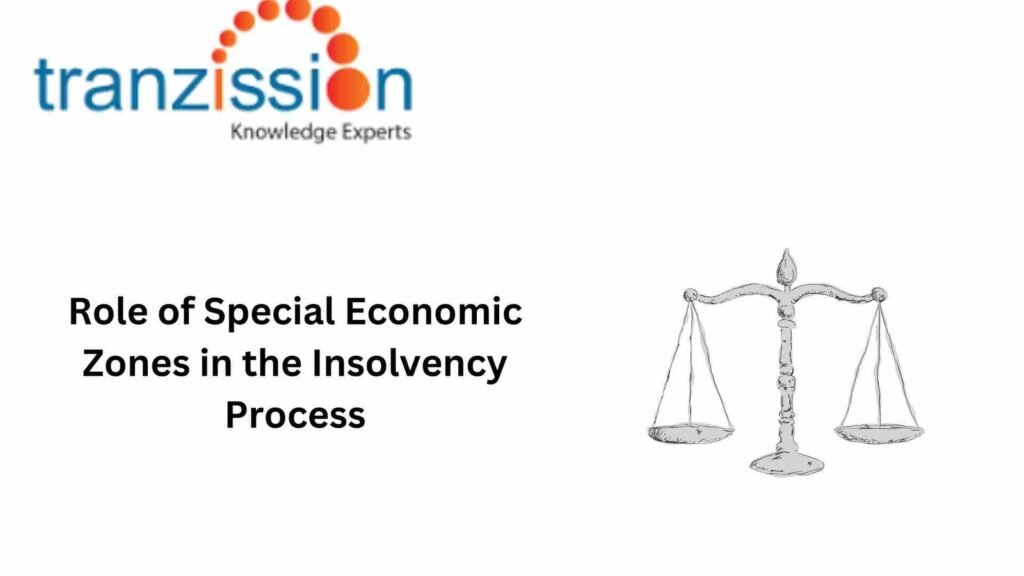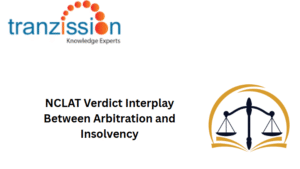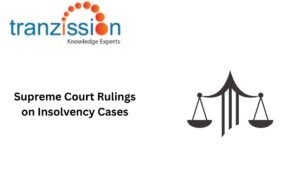
Role of Special Economic Zones in the Insolvency Process

Table of Contents
A company operating within a Special Economic Zone (SEZ) faces financial distress and enters insolvency proceedings under the Insolvency and Bankruptcy Code, 2016 (IBC). The link between SEZ and the IBC is based on the overriding effect over other legislations, including the Special Economic Zones Act, 2005 (SEZ Act). The IBC is considered the primary law to handle insolvency situations, even for SEZ companies, potentially impacting the SEZ Authorty to claim certain dues from a falling company within its zone.
What is the Special Economic Zones Act, 2005?
The Special Economic Zones Act was passed to promote experts, investment, and economic growth in India by creating designated zones with regulatory and tax benefits. The SEZ Act envisages key role for the State Governemnts in Export Promotion and creation of related infrastructure.
Read more: Analysing Section 60(5) of the IBC
What is the Insolvency and Bankruptcy Code, 2016?
The IBC is a comprehensive insolvency framework aimed at resolving stressed companies through a time-bound corporate insolvency resolution process (CIRP). It effectively improving the ease of doing business in India by facilitating quicker debt recovery and asset realisation. The Naitonal Company Law Tribunal (NCLT) upervises insolvency and liquidation proceedings, and Resolution Professionals (RPs) take control of debtor companies during CIRP.
What is the Nature of the Conflict Between the IBC and the SEZ Act?
A key conflict between the IBC and the Special Economic Zones Act lies in the fact that the IBC is considered to have overriding effect over the Special Economic Zones Act, meaning that when provisions of the two laws clash, the IBC takes precedence. The SEZ authorities objected to RPs taking over possession of units within SEZs. The development Commissioners insisted that their approval was necessary for such actions under the SEZ Act. The issue escalated when the Noida Special Economic Zone (NSEZ) Authority challenged IBC proceedings, leading to litigation before the Supreme Court.
Supreme Court’s Verdict – NSEZ Authority vs. IBC
In the Noida Special Economic Zone v. Manish Agarwal, the Supreme Court dismissed the appeals filed by the NSEZ, thereby affirming that IBC prevails over the Special Economic Zones Act in insolvency matters. This case resulted in the possession of SEZ units which were taken by RPs or liquidators, without requiring SEZ Authority’s prior consent. The ruling of this case emphasised the overriding of IBC over other laws in case of conflict and SEZ Act is regulatory, not insolvency-specific, making IBC the primary law for distressed companies, even within SEZs.
Read more: Section 33 of IBC – Insolvency and Bankruptcy Code
Legal Position – Primacy of IBC Over SEZ Act
IBC’s Overriding Effect:
Section 238 of the IBC states that the provisions of the IBC will override any other law that is inconsistent with it. This means that if there is a conflict between the IBC and another law, the IBC will take precedence, effectively giving it an “overriding effect” over other laws, including th4e SEZ Act.
NCLT and NCLAT Rulings Supporting IBC’s Supremacy:
The NCLT and NCLAT and the Supreme COurt have ruled in favour of IBC’s overriding effect. For instance, in the Shilpi Cable Technologies Case, the court held that the IBC provisions must be followed, thereby all necessary steps outlines in the IBC must be followed to initiate insolvency proceedings, and that a lawyer cannot simply issue a demand notice without proper authorisation from the operational creditor. Similarly in Noida Special Economic Zone case ruled that SEZ permissions cannot delay or derail IBC processes.
Implications of Supreme Court Ruling for Insolvency Professionals & Corporates
For Insolvency Professionals:
RPs or liquidators can be appointed to manage a corporate debtor that is an SEZ unit. This involves requesting documents and records from the corporate debtor’s office and managers. Therefore, RPs can now take control of assets within SEZs without requiring prior approval from Development Commissioners and possession-taking delays due to SEZ disputes may reduce, allowing smoother CIRP operations.
For Creditors & Financial Institutions:
As RPs can unhindered access to SEZ-based units and monetize assets more efficiently. Creditors and financial institutions have enhanced recovery prospects, but due to the nature of dispute it may be more compelx in comparison to other corporate insolvencies.
For SEZ Units & Business Owners:
It is necessary for SEE businesses to comply with the IBC to avoid disruption during insolvency. This reduces the scope for SEZ authorities to intervene in IBC processes. Hence, companies in SEZs are subjected to the same insolvency process as other insolvent companies.
Key Challenges Despite the Supreme Court Clarification
Resistance from Local SEZ Authorities:
Despite continuous rulings on IBC’s supremacy, the Development Commissioners may still create operational delays, citing non-insolvency SEZ regulations and practical coordination issues between RPs and SEZ administrators may persist.
Leasehold Rights & SEZ Land Allotments:
Referring to the SEZ Act and the SEZ Rules, 2006, SEZ land leases often contain restrictive clauses and liquidation of leasehold rights within SEZs may trigger legal disputes, requiring case-specific resolution, which the present insolvency framework does not have.
The Way Forward – Strengthening Coordination Between IBC & SEZ Frameworks
While the IBC takes precedence in insolvency proceedings, the SEZ benefits like tax exemptions can still be considered during the resolution plan formulation, depending on the specific circumstances. To streamline the process and avoid conflicts it is crucial to introduce institutional cooperation guidelines on RP and SEZ coordination during CIRP. The Insolvency and Bankruptcy Board of India (IBBI) can establish capacity building for SEZ Authorities to train their officers on IBC to streamline insolvency proceedings. Reforming the legislative on framework on such matters, such as standardising lease clauses in SEZs can make land lease agreements SEZ-friendly for CIRP and liquidation.
Conclusion
The IBC’ purpose is to streamline insolvency laws, which help maximise value for creditors and preserve the debtor’s business. Allowing SEZ Act to interfere with the IBC’s resolution process would disrupt the recovery mechanisms in the IBC. Section 238 of the IBC gives the IBC the power to override other laws, including the SEZ Act. In the case Noida Special Economic Zone Authority v. Manish Agarwal & Ors, the Supreme Court upheld the approval of the resolution plan under the iBC and dismissed the NSEZA’s appeals, ruling that the IBC prevails over the SEZ Act. However, to avoid conflicts between the two legislations, insolvnecy professionals need to leverage this clarity for faster asset resolution.





